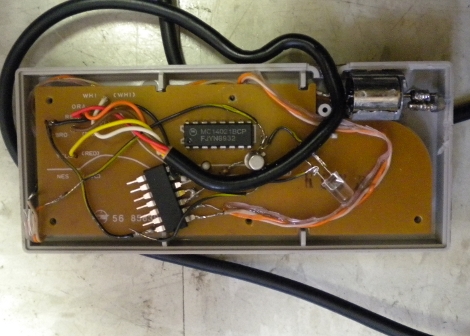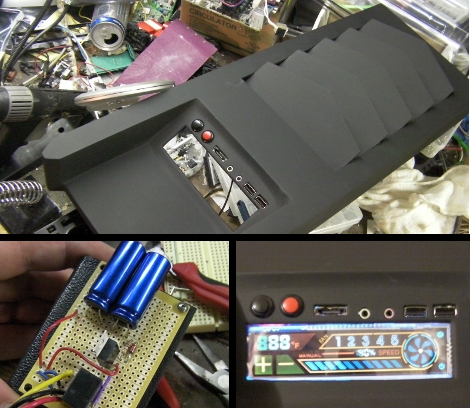
Add some feedback to an original NES controller by making it vibrate. This feature is often known as Rumble Pak, a controller add-on for the Nintendo 64 which vibrated as a game feature. This version adds a small DC motor (in the upper right) with a screw soldered off-center to the motor shaft.
[Andy Goetz] and his friend built this as a robot controller, taking advantage of the latch and clock pins. Normally, nothing happens while both pins are held high, a signal that they easily patched into using an AND gate. This is actually a neat find, as the addition of an internal microcontroller could add bi-directional communication when the latch is high and the clock is strobed.



















